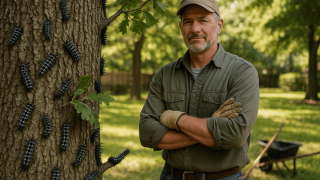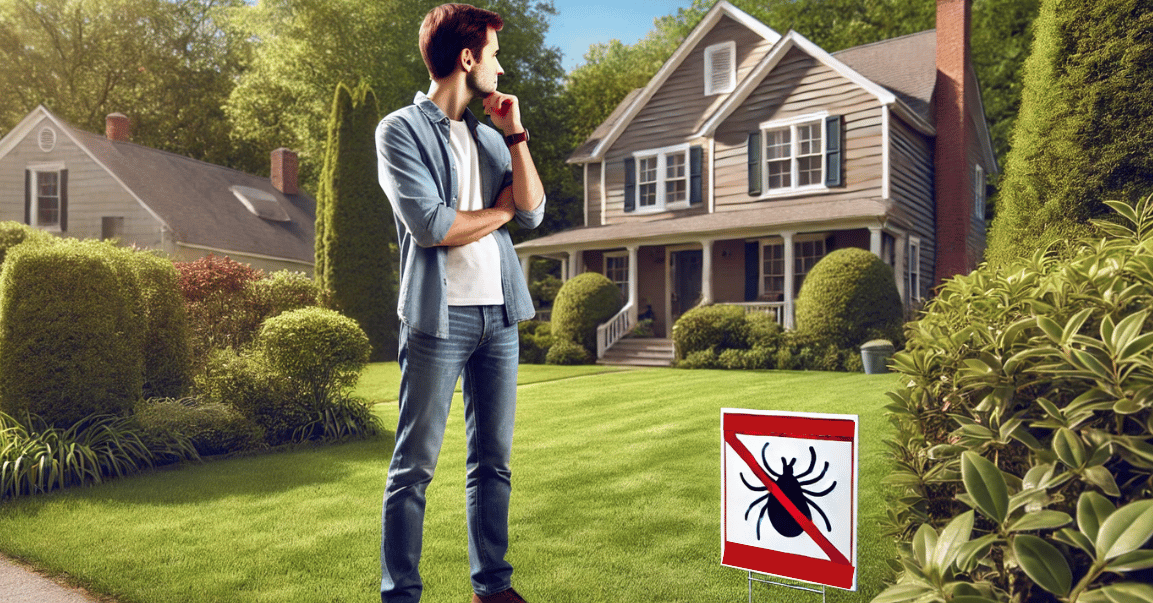At Strobert Tree Services, we love trees. But even trees need a little extra care sometimes, especially during a cicada emergence. Cicadas can cause real damage to trees. Knowing how to spot, manage, and prevent cicada damage will help your trees stay healthy.
Here’s what you need to know.
Cicada Identification and Behavior
Cicadas are large, flying insects. They have big eyes, short antennae, and clear wings. Their bodies are about 1–2 inches long.
Cicadas are famous for their loud buzzing sound. Only males sing. They use their songs to attract females. You usually hear them most during hot afternoons.
Unlike locusts, cicadas do not eat leaves. Instead, they cause damage when females lay eggs. They slice into tree branches and deposit their eggs inside. This process weakens the branches and can even kill them.
Cicada Life Cycle and Timing
Cicadas live most of their lives underground. Some species stay buried for 2–5 years. Others, like the periodical cicadas, emerge every 13 or 17 years.
When the soil temperature hits about 64 degrees, cicadas come out in huge numbers. They live above ground for only a few weeks. During that time, they mate, lay eggs, and die.
Eggs hatch about 6–10 weeks later. The young, called nymphs, fall to the ground and burrow underground. They start the cycle all over again.
Ecological Impact and Benefits of Cicadas
Cicadas are messy, but they aren’t all bad. They provide important benefits for the environment.
When cicadas die, their bodies add nutrients back into the soil. Their digging helps aerate the ground, which improves tree root growth. Birds, fish, and other wildlife also feast on cicadas, making them an important food source.
Still, for young trees and certain species, cicada damage to trees can be serious and needs attention.
Types of Cicada Damage to Trees
The main damage comes from egg-laying. Here’s what you might see:
- Branch flagging: Twigs and small branches die back, turning brown.
- Splintered branches: Females slice slits into branches to lay eggs.
- Broken limbs: Weakened branches can snap in storms or under their own weight.
- Reduced growth: Young trees can struggle to recover from heavy damage.
Tree Species Susceptibility
Not all trees are equally at risk. Cicadas prefer trees with slender, woody twigs. Some favorites include:
Large, healthy trees usually recover. But young or newly planted trees are at higher risk of long-term damage.
Recovery and Management After Damage
If cicadas have hit your trees, don’t panic. Most mature trees can bounce back. Here’s what we recommend:
- Prune dead branches: Removing damaged twigs helps trees heal faster.
- Water during dry periods: Good hydration supports recovery.
- Mulch properly: A 2–3 inch layer of mulch keeps roots cool and moist.
- Fertilize carefully: Light fertilization can boost regrowth but don't overdo it.
Sometimes, severe damage needs professional help. Strobert Tree Services offers tree healthcare programs. Our certified arborists can assess your tree’s health and create a recovery plan.
Prevention and Protection Methods
The best defense is preparation. Here are steps you can take before and during a cicada emergence:
- Use netting: Cover young trees with fine mesh (no larger than ¼ inch) to block cicadas.
- Delay planting: If a major emergence is coming, wait until after it passes to plant new trees.
- Avoid heavy pruning: Trees rely on their full canopy to recover. Wait until fall or winter if pruning is needed.
- Monitor for activity: Check trees regularly for signs of egg-laying damage.
Our team at Strobert Tree Services can help install netting and set up protection plans to give your trees the best chance.
Why Professional Help Matters
Tree care during cicada season isn’t just about cleaning up broken branches. It’s about keeping trees healthy long-term. Improper pruning, neglecting damage, or planting the wrong trees at the wrong time can lead to bigger problems later.
Our certified arborists understand cicada behavior. We know how to spot hidden damage and support trees through the recovery process. We offer:
- Expert pruning services
- Safe tree removal if necessary
- Comprehensive tree healthcare programs
We work in Delaware, Pennsylvania, and New Jersey, and we’re proud to help homeowners protect their beautiful landscapes.
Call Strobert Tree Services Today
If you're concerned about cicada damage to trees, don’t wait. Early action makes a big difference.
Contact Strobert Tree Services today. We offer free consultations and certified arborist services to help your trees thrive.
Call 1-800-TREE-SERVICE or visit our website to schedule a visit.
Your trees deserve the best. Let’s keep them strong and beautiful—cicadas and all.











